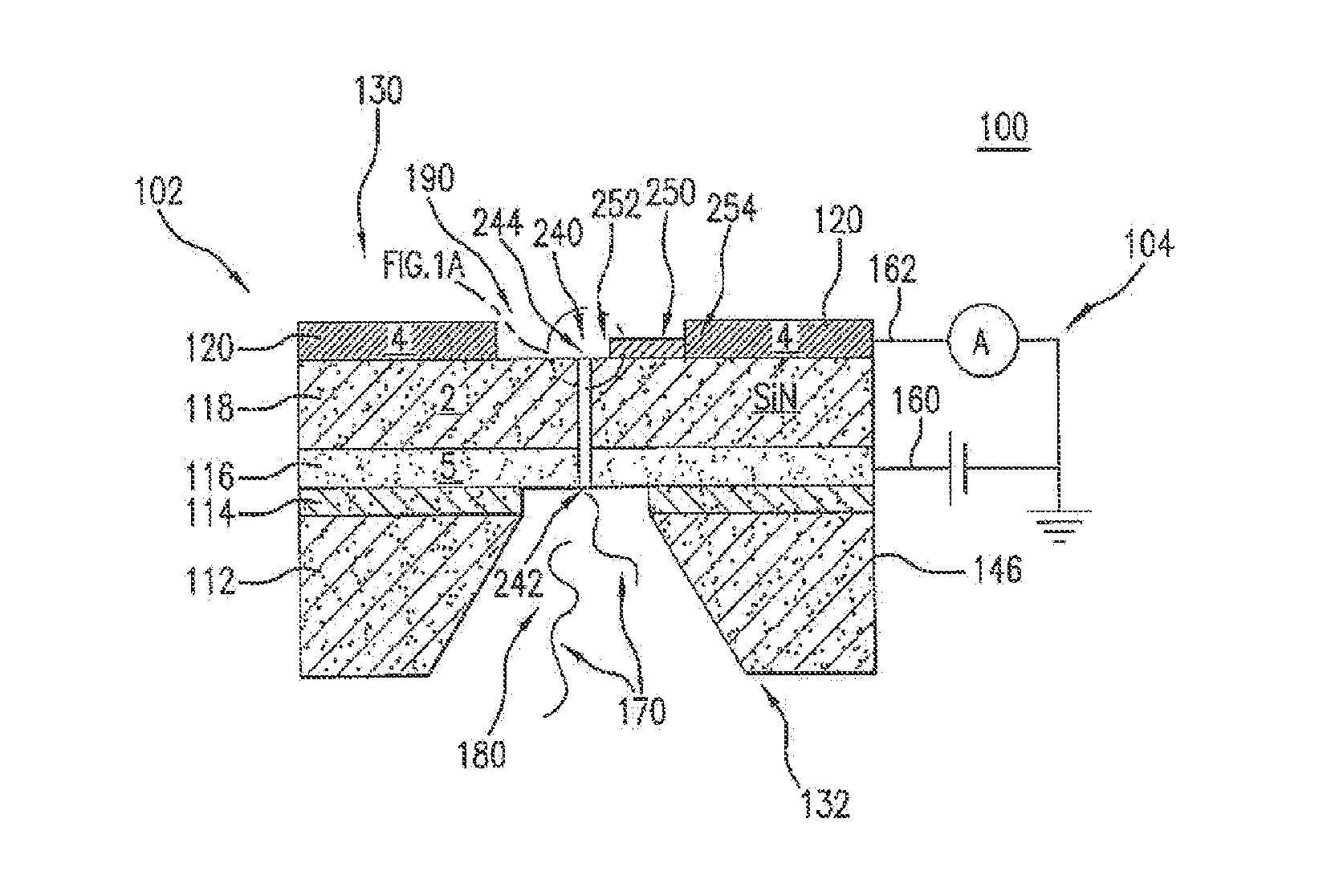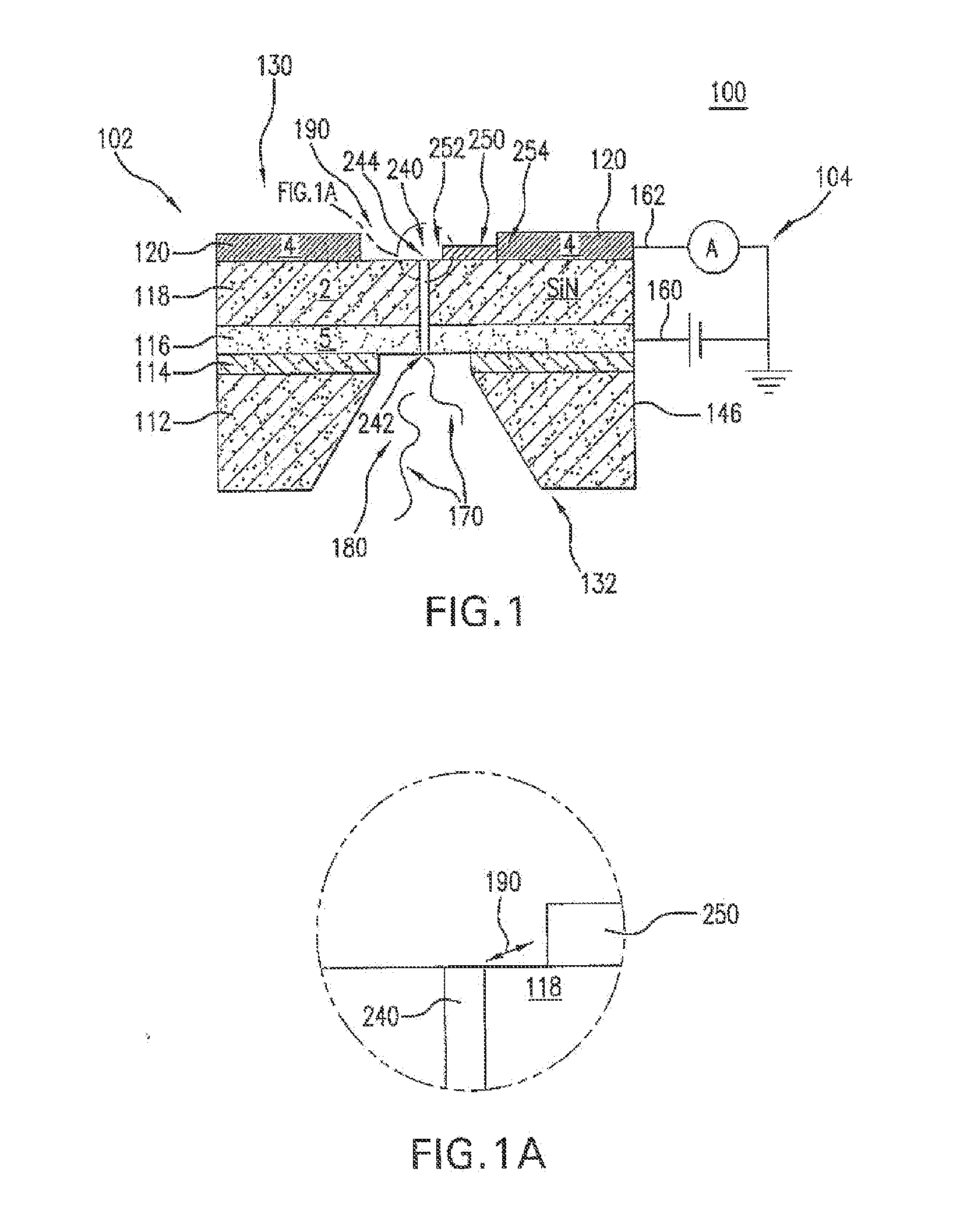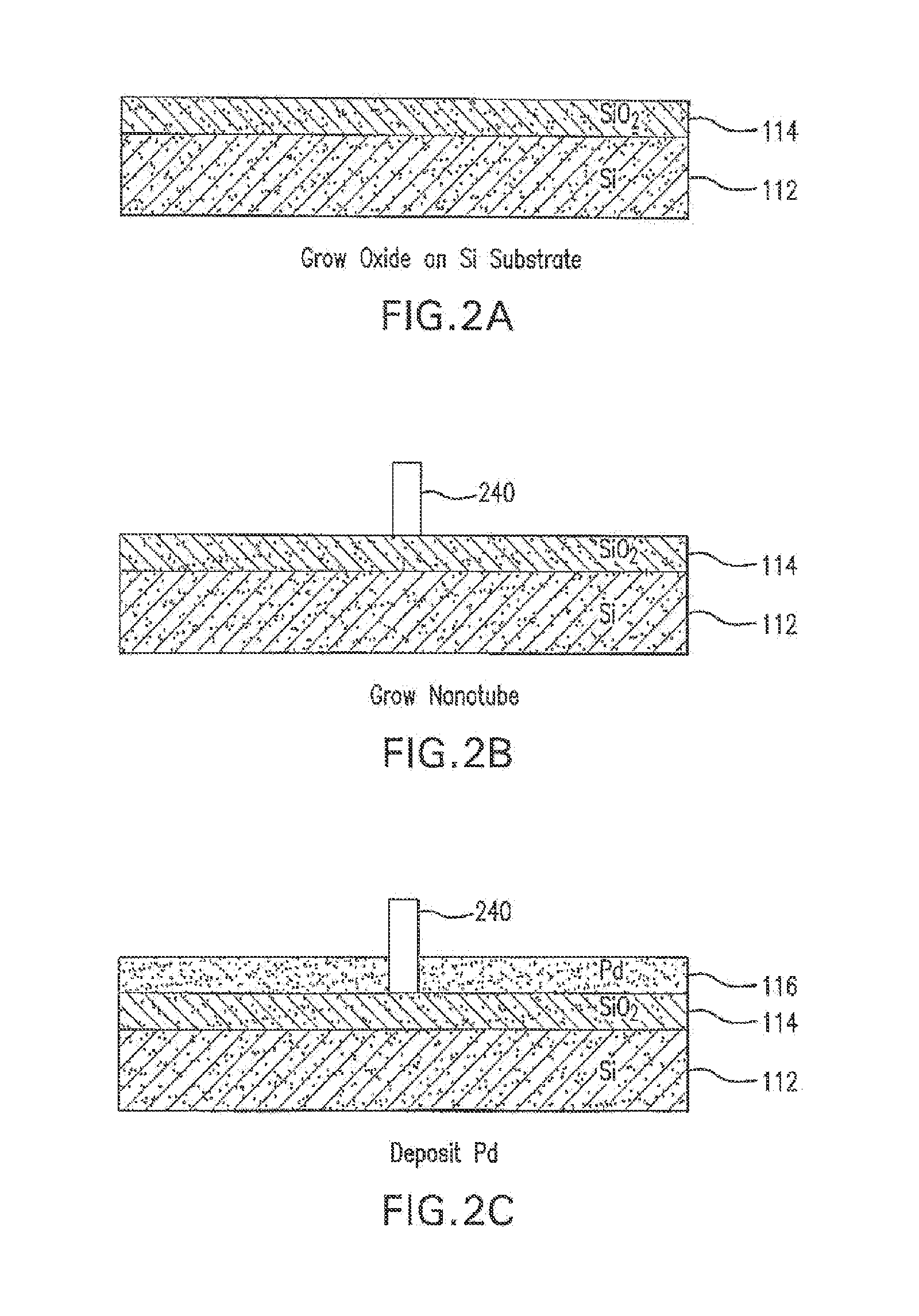Nanopore and Carbon Nanotube Based Dna Sequencer and A Serial Recognition Elements
a dna sequencer and carbon nanotube technology, applied in the direction of fluid pressure measurement, peptides, liquid/fluent solid measurement, etc., can solve the problem of high precessiveness
- Summary
- Abstract
- Description
- Claims
- Application Information
AI Technical Summary
Benefits of technology
Problems solved by technology
Method used
Image
Examples
example 1
DNA Translocation Through Single-Walled Carbon Nanotubes
[0304]To test the possibility that tunnel signals could be generated by smaller CNTs, we built a nanopore-like device (FIG. 34) was built using lithography. Commercially-available MWCNTS (4 to 5 nm diameter) were spread on a silicon wafer, located relative to fiducial marks on the chip using low-voltage SEM, then covered in 700 nm of PMMA. E-beam lithography was used to create a series of wells in the PMMA lying on the path of a CNT (FIG. 34B). The exposed regions of the CNT in the wells were removed with an oxygen plasma, leaving intact CNT segments that connect adjacent wells. The device was completed with a molded PDMS microfluidic cover that allowed injection of fluids into and out of the reservoir wells (FIG. 34C). SWCNT (<1 to 2 nm diameter) devices were made by CVD growth from Co nanoparticles followed by the same set of lithographic steps.
[0305]5 nm MWCNT tubes showed fast (μs—limited by the electronics) current blockad...
example 2
Synthesis of Trans-Base-Pair Readers with Amide and Thiol Linkers
[0308]Propargyl amine and propargyl thiol are used as the molecular linker for attachment of the trans-base-pair readers to CNT and metal electrodes respectively. Our S™ data has shown that the propargyl group is a suitable molecular linker in terms of conductivity and flexibility. These linkers are synthesized and incorporated into the trans-base-pair readers in their amine and thiol protected forms: N-propargyltrifluoroacetamide and propargyl S-thiobenzoate. We have developed an in situ method to remove these protecting groups before use without need of further purification. The Sonogashira Reaction will be employed for incorporation of the molecular linkers into the trans-base-pair readers as discussed in the following sections.
Synthesis of molecular linker functionalized [1,8]Naphthyridine-2,7-diamines
[0309][1,8]Naphthyridine-2,7-diamine has been synthesized using a procedure reported in literature. We have develop...
example 3
Attachment Schemes
[0313]Design and Modeling of Trans-Base-Pair Reader Reagent Attachment Schemes.
[0314]Oxygen-plasma etching of CNTs leaves the ends predominantly functionalized with carboxylic acid residues, so amide linkages can readily be made. However, our device requires different reagents on each electrode. There are currently three options, each of which will be explored as required to produce the required degree of functionalization of each electrode:
[0315]Random Functionalization.
[0316]There are many sites available on the ends of 2 nm diameter tubes (FIG. 39). If the probability of each reagent binding a particular site is equal, then on the 18,0 tube shown, the probability that each site on a given tube binds just one of the two reagents is (0.5) which is vanishingly small. In practice, not every site will be reacted and there is the possibility of fruitless assemblies with the target base across the end of one tube. These may not matter if fluctuations drive an assembly ...
PUM
| Property | Measurement | Unit |
|---|---|---|
| Mass | aaaaa | aaaaa |
| Mass | aaaaa | aaaaa |
| Mass | aaaaa | aaaaa |
Abstract
Description
Claims
Application Information
 Login to View More
Login to View More - R&D
- Intellectual Property
- Life Sciences
- Materials
- Tech Scout
- Unparalleled Data Quality
- Higher Quality Content
- 60% Fewer Hallucinations
Browse by: Latest US Patents, China's latest patents, Technical Efficacy Thesaurus, Application Domain, Technology Topic, Popular Technical Reports.
© 2025 PatSnap. All rights reserved.Legal|Privacy policy|Modern Slavery Act Transparency Statement|Sitemap|About US| Contact US: help@patsnap.com



